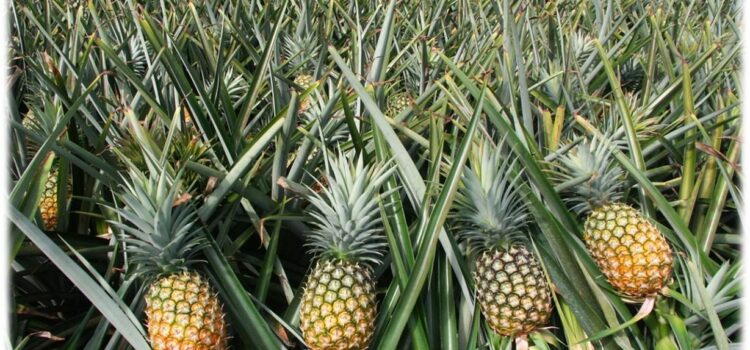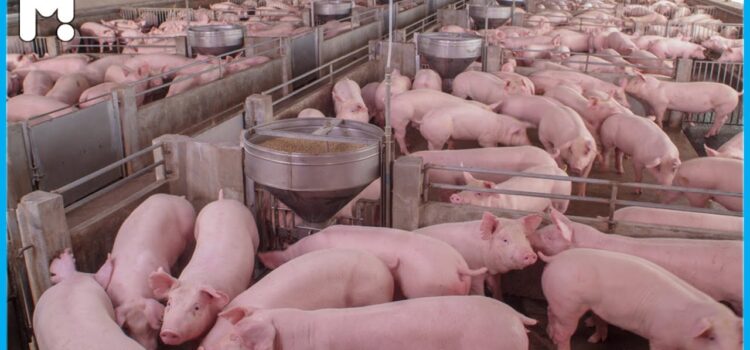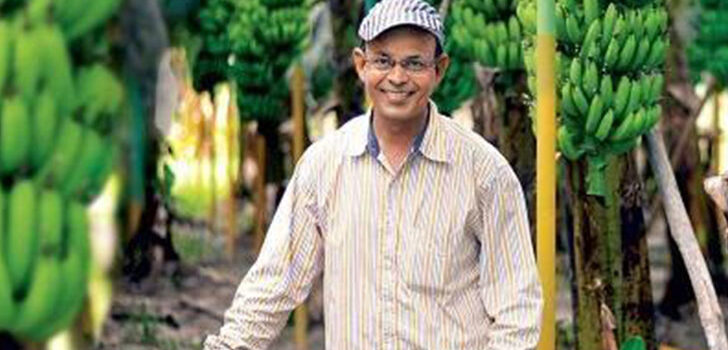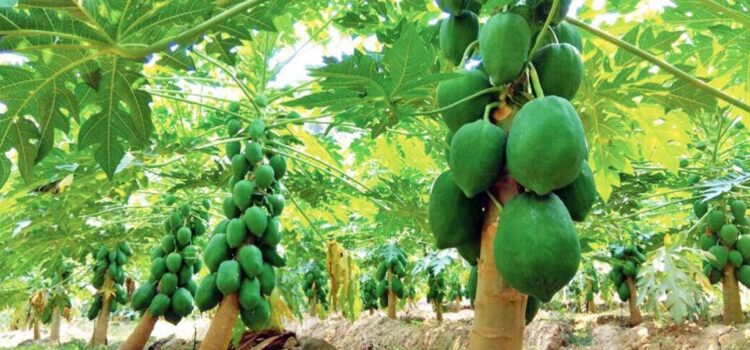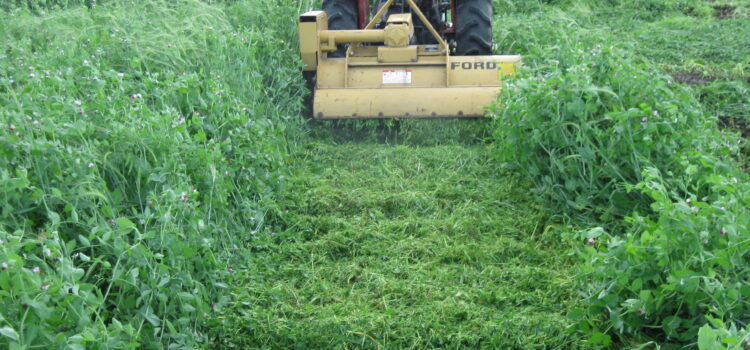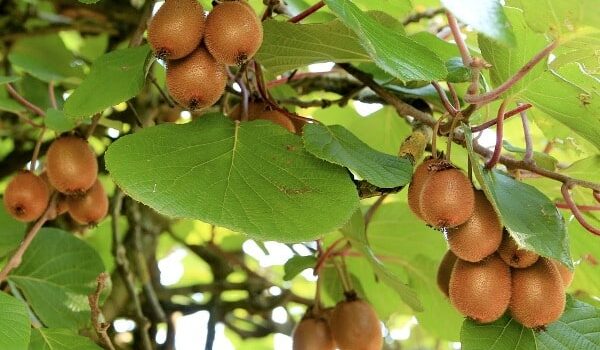How to Cultivate Pine Apple, Selling & Marketing Strategies, Complete Guide
The pineapple (Ananas comosus) is a tropical fruit known for its sweet and tangy flavor. It is a member of the Bromeliaceae family and is native to South America, specifically the regions of Brazil, Paraguay, and northern Argentina. Pineapples are now grown and enjoyed in many tropical and subtropical regions around the world. The pineapple plant is herbaceous and has long, sword-shaped leaves that arise from a central stem. It typically reaches a height of about 3 to 5 feet (1 to 1.5 meters). The fruit itself is actually a composite of many individual berries fused together around a central core, and it forms from the flowering of the pineapple plant.
Pineapples have a rough, spiky, and brownish-yellow skin, which is removed before consuming the fruit. Inside, the flesh is juicy, fibrous, and golden-yellow in color. Pineapples are known for their sweet and refreshing taste, with a balance of acidity that gives them a distinctive flavor profile. Pineapples are not only delicious but also a good source of essential vitamins and minerals. They contain significant amounts of vitamin C, manganese, and bromelain, an enzyme that aids in digestion. Pineapples are also relatively low in calories and fat, making them a healthy addition to a balanced diet. In culinary applications, pineapples are used in a variety of dishes. They can be eaten fresh, added to fruit salads, used as a topping for desserts or pizzas, blended into smoothies, or juiced. Pineapple juice is also a popular beverage on its own or as an ingredient in cocktails and tropical drinks. Overall, pineapples are a tropical fruit appreciated for their sweet taste, juiciness, and versatility in both sweet and savory recipes.
Cultivation Of Pine Apple
Cultivating pineapples involves several key steps. Here is an overview of the pineapple cultivation process:
- Selecting planting material: Obtain healthy and disease-free pineapple suckers or slips from a reputable source. These are the offshoots that emerge at the base of mature pineapple plants.
- Preparing the planting area: Choose a well-drained location with full sun exposure. Pineapples prefer slightly acidic soil with a pH between 4.5 and 6.5. Prepare the soil by loosening it and removing any weeds or debris.
- Planting the suckers or slips: Dig planting holes at a depth that allows the base of the pineapple slips to be at ground level. Space the plants about 2 to 3 feet (0.6 to 0.9 meters) apart to allow room for growth. Gently place the slips in the holes and firm the soil around them.
- Watering: Initially, water the newly planted slips thoroughly to help establish their roots. Afterward, provide regular watering to keep the soil slightly moist, but avoid overwatering as it can cause root rot. Pineapples are relatively drought-tolerant, so they don’t require excessive watering.
- Mulching: Apply a layer of organic mulch, such as straw or wood chips, around the base of the pineapple plants. This helps conserve moisture, suppresses weeds, and maintains a more consistent soil temperature.
- Fertilization: Pineapples benefit from regular fertilization. Apply a balanced fertilizer or a specialized pineapple fertilizer according to the manufacturer’s instructions. Start fertilizing after the plants are established and continue every two to three months throughout the growing season.
- Weed control: Regularly remove weeds around the pineapple plants, especially during the early stages of growth, to reduce competition for nutrients and water.
- Disease and pest management: Monitor the plants for any signs of diseases or pests. Common pineapple pests include mealybugs, scale insects, and aphids. Consult with local agricultural authorities or experts for appropriate pest management strategies and treatments.
- Flowering and fruiting: Pineapples typically require around 18 to 24 months to reach maturity and produce fruit. They produce a central stalk called an inflorescence, which develops into a cluster of small purple flowers. These flowers eventually form the pineapple fruit.
- Harvesting: Pineapples are ready for harvest when they develop a golden-yellow color and have a sweet fragrance. Gently twist or cut the fruit from the plant using a sharp knife. Carefully remove the crown (leafy top) of the harvested pineapple, as it can be used for propagation. Pineapple cultivation requires patience, as it takes time for the plants to mature and produce fruit. Local growing conditions, climate, and cultivar selection can also influence the specific cultivation practices. Therefore, it’s always beneficial to consult local agricultural resources or experts for tailored guidance in your region.
Importance Of Pine Apple
Pineapples hold several key importance and benefits, including:
- Nutritional value: Pineapples are a good source of essential vitamins and minerals. They are rich in vitamin C, which supports the immune system and aids in collagen production. They also contain manganese, which plays a role in bone health, metabolism, and antioxidant defenses. Additionally, pineapples provide dietary fiber, which promotes digestive health.
- Digestive health: Pineapples contain an enzyme called bromelain, which aids in digestion by breaking down proteins. Bromelain is known for its anti-inflammatory and digestive properties, and it can help alleviate digestive disorders such as bloating and indigestion.
- Anti-inflammatory properties: Bromelain found in pineapples has been shown to have anti-inflammatory effects. It may help reduce inflammation and swelling associated with conditions like arthritis, sinusitis, and sports injuries.
- Immune system support: Pineapples are a natural source of vitamin C, which is vital for immune system function. Vitamin C helps protect against oxidative stress, boosts the production of white blood cells, and enhances the body’s ability to fight off infections and illnesses.
- Skin health: The antioxidant properties of pineapples, mainly due to their vitamin C content, can help protect the skin against free radical damage caused by environmental factors. Vitamin C also plays a role in collagen synthesis, which promotes skin elasticity and helps maintain a youthful appearance.
- Hydration and detoxification: Pineapples have a high water content, which can help keep the body hydrated. The natural diuretic properties of pineapples can also support kidney function and assist in flushing out toxins from the body.
- Weight management: Pineapples are low in calories and fat while being rich in dietary fiber. The fiber content aids in promoting satiety and may help control appetite, contributing to healthy weight management.
- Eye health: Pineapples contain beta-carotene, a precursor to vitamin A, which is essential for maintaining good vision and eye health. Beta-carotene acts as an antioxidant and may help reduce the risk of age-related macular degeneration (AMD), a common eye condition.
- Anti-inflammatory benefits for respiratory health: Bromelain in pineapples has been found to have anti-inflammatory effects on respiratory conditions such as asthma and bronchitis. It may help reduce mucus production and alleviate symptoms associated with respiratory inflammation.
- Enjoyment and culinary versatility: Pineapples are a delicious and versatile fruit that can be enjoyed in various ways. They can be eaten fresh, added to salads, used in smoothies, incorporated into savory dishes, and used in desserts and baked goods, providing a tropical and tangy flavor to culinary creations. It’s important to note that while pineapples offer various health benefits, individual results may vary, and moderation is key. Incorporating pineapples as part of a balanced diet can contribute to overall health and well-being.
Demond Of Pine Apple
The demand for pineapples is significant due to their popularity as a tropical fruit and their versatile use in various culinary applications. Pineapples are enjoyed fresh, as well as processed into various forms such as canned pineapple, pineapple juice, dried pineapple, and pineapple-based products like jams, jellies, and desserts. Here are some factors contributing to the demand for pineapples:
- Consumer preferences: Pineapples have a distinct, sweet-tangy flavor that appeals to many people. Their tropical taste and refreshing nature make them a popular choice for fruit salads, smoothies, desserts, and as a standalone fruit.
- Health and nutrition: Pineapples are a good source of vitamin C, manganese, and dietary fiber. They are also low in calories and fat. Increasing consumer awareness of health and nutrition benefits has contributed to the demand for pineapples as a nutritious fruit option.
- Culinary versatility: Pineapples can be used in a wide range of culinary creations. Their sweet and tangy flavor complements both sweet and savory dishes, making them suitable for salads, stir-fries, grilled dishes, baked goods, and beverages. This versatility increases their demand in the food industry.
- Global availability: Pineapples are cultivated in many tropical and subtropical regions worldwide. This widespread availability ensures a steady supply and allows consumers in various countries to enjoy pineapples throughout the year, regardless of local growing seasons.
- Growing interest in tropical flavors: There has been a growing interest in tropical flavors in the food and beverage industry. Pineapple’s tropical taste and association with exotic locations have made it a sought-after flavor in various products, including juices, smoothies, cocktails, ice creams, and yogurts.
- International trade: Pineapples are a globally traded fruit. They are exported and imported by numerous countries, contributing to their availability in diverse markets and catering to the demand of consumers who may not have local pineapple production.
- Convenience and processed products: Processed pineapple products, such as canned pineapple and pineapple juice, offer convenience and longer shelf life. They are widely used in the food industry and are preferred by consumers for their convenience in cooking, baking, and making beverages. Overall, the demand for pineapples stems from their distinctive flavor, versatility, nutritional benefits, and availability in various forms. As consumer tastes evolve and the popularity of tropical flavors continues, the demand for pineapples is likely to remain strong in both local and international markets.

How to Sell Pine Apple
To sell pineapples, consider the following steps and strategies:
- Identify your target market: Determine who your potential customers are, such as local grocery stores, farmers markets, restaurants, juice bars, or direct consumers. Understanding your target market will help tailor your sales approach and marketing efforts.
- Ensure high-quality pineapples: Offer fresh and high-quality pineapples to attract customers and build a positive reputation. Select ripe pineapples with vibrant color, a sweet aroma, and a firm texture. Proper handling and storage are essential to maintain the quality of the fruit.
- Establish relationships with buyers: Reach out to potential buyers and establish relationships with them. Attend local farmer’s markets or trade shows where you can directly connect with retailers, wholesalers, and restaurateurs who may be interested in purchasing your pineapples. Networking is crucial in building business relationships.
- Packaging and branding: Develop attractive packaging for your pineapples. Consider using clear containers or boxes that showcase the fruit’s freshness. Create a logo or label that represents your brand and stands out on the packaging. Highlight any unique selling points, such as organic or sustainably grown pineapples.
- Pricing strategy: Determine a competitive yet profitable pricing strategy for your pineapples. Consider factors such as production costs, market demand, and the prices of similar products in your area. Be flexible with pricing and offer volume discounts for larger orders to attract bulk buyers.
- Marketing and promotion: Utilize various marketing channels to promote your pineapples. Create a website or online store to showcase your product and provide information about your business. Utilize social media platforms to engage with potential customers, share appealing images and recipes, and run targeted ads. Collaborate with influencers or local food bloggers who can help spread the word about your pineapples.
- Sampling and demonstrations: Offer samples of your pineapples at farmers markets or local events. Allow potential customers to taste the fruit’s quality and experience its flavor. Consider organizing cooking demonstrations or recipe tastings that incorporate pineapples to showcase their versatility.
- Customer service and feedback: Provide excellent customer service to build loyalty and trust. Respond promptly to inquiries, address customer concerns, and ensure timely delivery of orders. Encourage customers to provide feedback and testimonials, which can help attract new customers.
- Consider value-added products: Explore value-added products using pineapples, such as pineapple juice, dried pineapple, or pineapple-based preserves. These products can diversify your offerings and cater to different market segments.
- Continuous improvement: Stay updated on industry trends, consumer preferences, and market demands. Continuously evaluate and improve your cultivation and sales processes to deliver the best quality and value to your customers. Remember to comply with relevant regulations, permits, and certifications associated with selling fresh produce in your area. Building a strong reputation for quality and reliability will contribute to the long-term success of selling pineapples.


